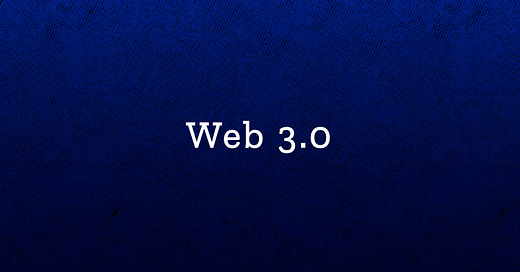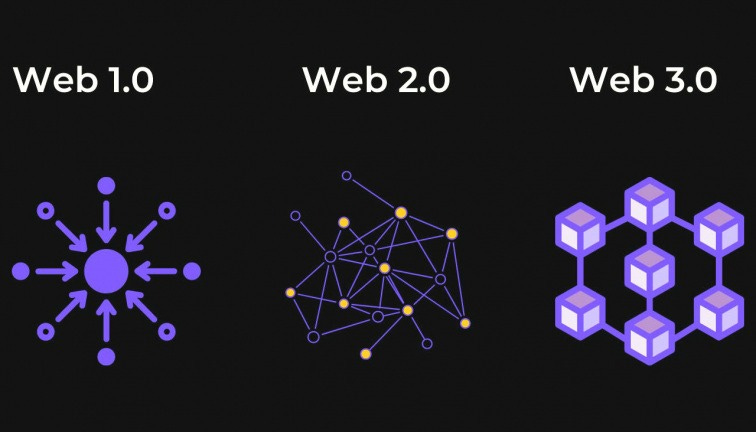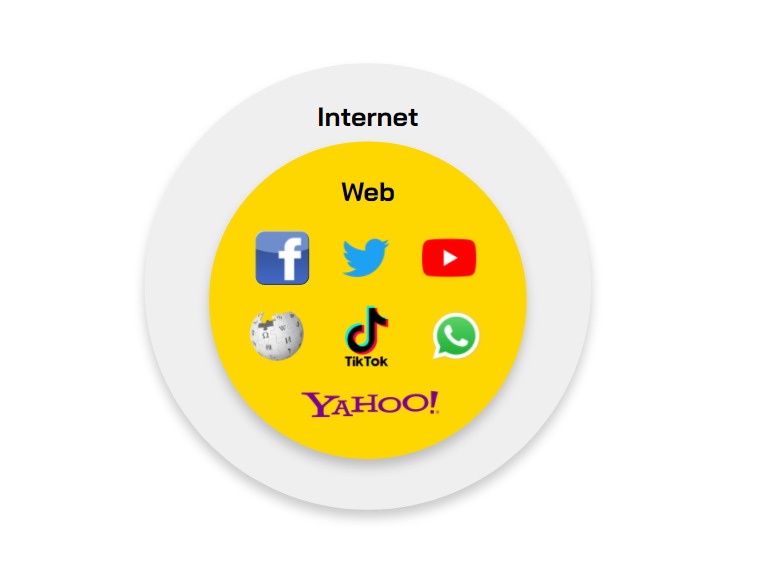Web 3.0 will be the next era?
Web 3.0 is not a trend, it is a revolution of the Web, starting from Web 1.0.
Hello everyone,
If someone talks to me about Web 3.0 trending, I can buy some concerned altcoin. Personally, I don’t think of it. Web 3.0 is not a trend, it is a revolution of the Web, starting from Web 1.0.
It’s really hard to define Web 3.0. We can understand in a simple way that Web 3.0 is an upgraded version to solve the problems of Web 2.0.
I think this is the full definition:
“Web3” is a good all-encompassing term that captures cryptocurrencies (digital gold & stablecoins), smart contract computing (Layer 1–2 platforms), decentralized hardware infrastructure (video, storage, sensors, etc), Non-Fungible Tokens (digital ID & property rights), DeFi (financial services to swap and collateralize web3 assets), the Metaverse (the digital commons built in game-like environments), and community governance (DAOs, or decentralized autonomous organizations).
With this definition, I suppose that Web 3.0 will be the whole market which means all coins/tokens, not some coins/tokens concerning trending.
I’m Neo — Admin — Community Manager of Optimus Finance and Growth Marketing of LECLE Vietnam. Let's get started!
Firstly, we will come to what Web is. Because I think that some people misunderstand between Web and Internet.
Let’s talk briefly or you can scroll down to the next point.
1. What is the Web?
Web (or website) is a collection of information publicly accessible and interlinked Web pages through the Internet. This collection of information is what is developed and posted on the Web, from articles, social networks, entertainment sites, …etc.
So, the Internet is like the basis or the infrastructure (land), and the Web (house) will be built and developed on that.
Example 1: ICON chain and DApps on ICON chain. ICON chain is like the Internet and DApps (Optimus, Balanced, OMM,…) are webs, the same as the other chains and the other DApps.Example 2: The bookstore and the books. The Internet is like the bookstore and the Web is the books or the book collections.
All of them will make cyberspace impeccable we are accessing today.
2. Web 1.0 — Information Display (1989–2005)
Web 1.0 created a place to help users to access information more easily.
However, Web 1.0 at this time was basically some text lines with links to other articles. It allowed us to search for information and read it. There was very little in the way of user interaction or content generation. According to Berners-Lee, we can call it the “read-only web”.
=> Most of the users are Consumers.
3. Web 2.0 — Information Transfer (2005–now)
So easy to realize that Web 2.0 is an upgraded version of web 1.0 we are using now.
There are more tools to improve the Web such as Javascript, CSS,…They are the basis for platforms like Youtube, Facebook, Wikipedia, Twitter… to develop. Thanks to these platforms, we can gradually interact with the content we are reading or something better, we can now create content (to become Creators) and share it publicly. According to Berners-Lee, we can call it the “read-write web”.
We can interact with each other and access more information all around the world. However, we will see the power is concentrated among the big owners. If we would like to use something or services on their platform, we will often provide certain information such as personal information,…the big owners can take our information for their own profit. It will be limited for someone who would like to access the features inside.
Another side, the content or information we created, can be easily deleted by them even though they don’t own it.
=> Most of the users are Creators.
4. Web 3.0 — Value Transfer (unspecified)
As I mentioned from the beginning, Web 3.0 is an ungraded version to solve the problems of Web 2.0. The power will be concentrated among us, we can create and own our information and can’t be interfered with or controlled by anyone.
The limitations of Web 2.0 will also open a new era when we can execute value on the Web freely and unlimitedly. According to Berners-Lee, we can call it the “read-write-execute web”.
Example 1: With Web 2.0, to transfer some money to someone, we have to depend on the Bank and we need to provide the necessary information, the Bank can track and block your transaction if it’s not allowed.
With Web 3.0 we can freely transfer money to anyone with a non-custodial wallet like Trust Wallet, ICONex Wallet, Metamask,… all transactions can’t be prevented. Of course, if your money is unhealthy or you intend to do money laundering, you will be marked and can’t make the transactions for safety.
Example 2: With Web 3.0 we can borrow plenty of assets in Lending protocols like Balanced, OMM, Compound, Aave,…freely without proving their assets. Everything is transparent and verifiable on-chain.
It will be never illusory if we have:
Development of technology on hardware and software, especially Blockchain và AI.
Taking full advantage of Decentralized, Trustless and don’t need to be dependent on third parties.
Advances in AI and Machine Learning.
=> Most of the users are Owners.
5. What can Web 3.0 do?
Taking full advantage of Web 2.0’s good features and helping to solve the limitations of Web 2.0 including:
Verifiable: Everything is transparent and easy to verify on-chain.
Trustless & Permissionless: Minimize trust-related factors and anyone can join it.
Self-Governing: User-centered, we have full rights to our information and assets.
Distributed: Power will be distributed to users and decisions are made and implemented by decentralized autonomous organizations (DAOs). All of them can’t be controlled by a centralized organization.
Native built-in payments: Web 3.0 doesn’t require us to provide personal information and prevent user payments and transactions.
We can say that Blockchain will create Web 3.0 and thanks to Web 3.0, Blockchain will be a breakout.
6. Limitations of Web 3.0
Although Web 3.0 can be the next revolution, the next milestone or the next breakout, Web 3.0 still has some limited things at the moment before being more impeccable.
Scalability: There are still some big things between Web 2.0 and Web 3.0 in terms of scalability, processing speed, cost,…
UX: User experience is still not really good, because of participating in Web 3.0 products like Crypto, users need to research and learn new knowledge, download new software, many other things and many different steps. It will prevent to mass-adoption.
Accessibility: Applications are mostly built independently and not popular and familiar as Web 2.0 applications, make accessibility reducing.
Cost: The cost is very expensive to develop because of Ethereum’s gas fees or the cost of audits.
7. Closing thoughts
Blockchain is still early and Web 3.0 is still evidently early. The generations of Web 1.0 and 2.0 took decades to develop and are being used more in life. This is similar to Web 3.0, everything will be developed and applied slowly so that one day we will use them naturally like we’re using social network platforms such as Facebook, Twitter, …😉
This post is for educational purposes only. All materials I used were the different reference sources. Hope you like and follow us and feel free to reach out to us if there is an exchange of information. Cheers! 🍻
#web3 #blockchain #Defi #NFT











